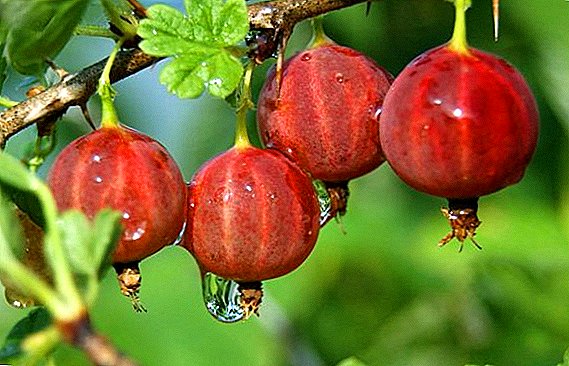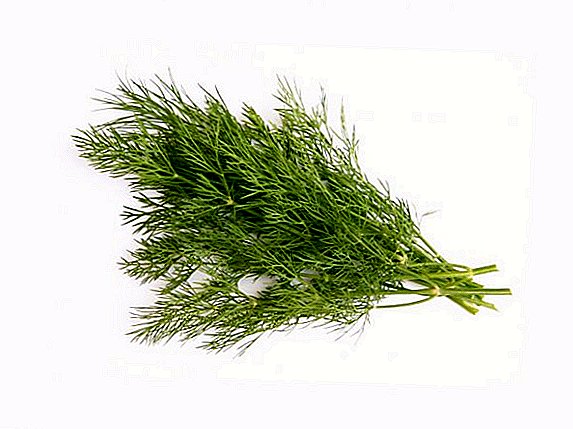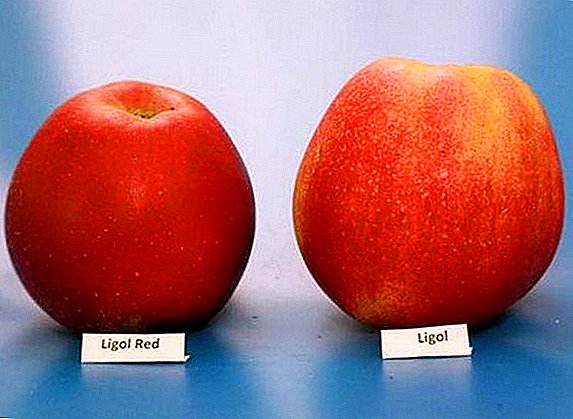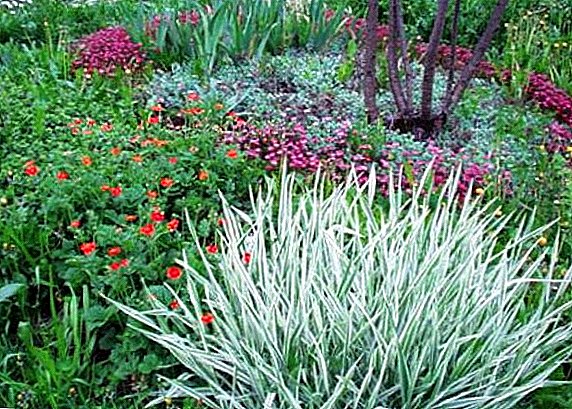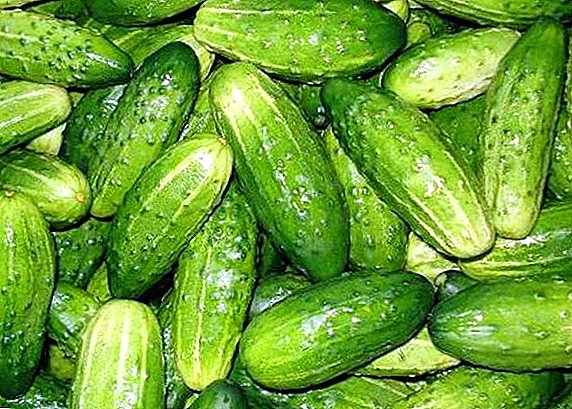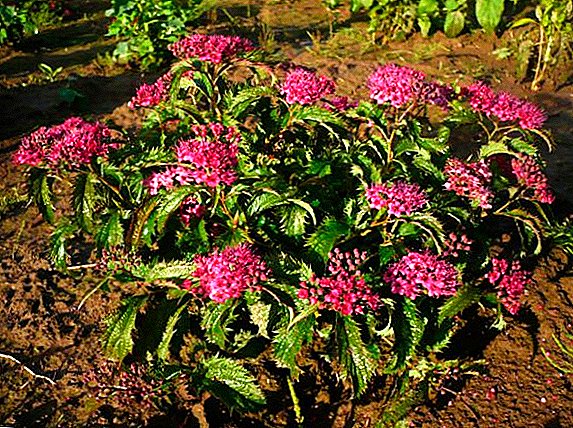 The decoration of any interior will be such an unusual and beautiful indoor plant, like a coffee tree. The plant will look great in a bank or school, and in a small apartment.
The decoration of any interior will be such an unusual and beautiful indoor plant, like a coffee tree. The plant will look great in a bank or school, and in a small apartment.
A coffee tree
Among gardeners, the tenacious myth is that it is not easy to grow a coffee tree at home, and caring for it is difficult. In fact, the process of growing exotics in pots is no more difficult than growing other indoor plants.
It is only necessary to take into account some recommendations relating specifically to this culture, and soon your window sill will decorate a pot with a tender sprout of the future coffee tree.
Where to place?
Since a young plant needs a lot of light, the window sill in a warm room will be the most suitable place to install a pot with it. 
Coffee will grow in the north window, but the southern direction will be the most favorable for it.
Humidity and temperature
In order for a seedling to develop normally, it must be provided with normal air temperature:
- in summer - up to + 22 ° С;
- in winter - up to + 18 ° С.
In winter, it is important not to lower the temperature in the room below + 12 ° C, since at lower temperatures the growth is suppressed and the roots of the young plant rot. Adult coffee can safely winter out and in more uncomfortable conditions.
The winter temperature of + 10 ° С is acceptable for it, but at the same time good illumination and rare and weak irrigation of the root zone is obligatory. 
The coffee seedling is very responsive to regular spraying of the leaves with warm settled water. This procedure must be done at any time of the year. The air in the room where the tree grows should be moderately humid: excessive dryness or excessive humidity of the air inhibit the plant.
Lighting
There is no particular light addiction in the coffee tree. The main thing is that the illumination is good. If the tree is installed on the north window, then its growth will be slow, flowering will come much later, and the fruiting will be prolonged.
In your favorite coffee lighting of the southern direction there are also pitfalls. The leaves of young coffee are easily exposed to sunburn, so in the summer the plant should be slightly pritenyat.
Houseplants are the perfect decoration for any apartment; they help decorate a home when the weather is bad. The most popular indoor plants are: azalea, kalanchoe, anthurium, geranium, orchid, spathiphyllum, violet, begonia.
For easy shading of coffee, a newspaper sheet is attached to the window glass with the help of scotch tape. The sun's rays falling on the seedling become scattered and do not burn the leaves.
An adult plant without good sunlight does not form a full-fledged ovary. As soon as the flower brush forms the embryos of the fruit, it is advisable to tree the tree. When planting coffee plantations in Brazil, the saplings of coffee trees sit in the environment of other trees (future sources of shade). 
The soil
Coffee loves breathable, loose soil. When watering such a soil water moistens the roots of a tree, but does not stagnate, and excess moisture flows through the drainage into the pan.
There are two types of substrates used:
- the first is that one part of the leaf turf is mixed with two parts of coarse sand and two parts of rubbed peat;
- the second - leaf turf, black soil, humus, sand in equal parts are mixed. Two parts of sour peat are added to them.
Whatever variant of soil mixture you choose, if possible add to it finely chopped sphagnum moss. Moss will retain moisture in the soil and ensure its acidity and friability.  Be sure to arrange at the bottom of the pot good drainage - stagnant water leads to the death of the root system.
Be sure to arrange at the bottom of the pot good drainage - stagnant water leads to the death of the root system.
Planting a plant
At home, the coffee tree is planted in a deep pot, as the plant has taproot, extending deep down. Before planting a seed of coffee, it must be scarified.
The coffee bean needs to be deeply scratched with a knife or lightly squeezed with pliers for cracking the hard outer shell, and then it will quickly germinate. The coffee tree can be grown from seeds or from green cuttings.
Did you know? Scarification is a mechanical violation of the seed coat. Without scarification, the hard grain (coffee, lagenaria seed, etc.) will lie in the soil until its outer hard shell decays over time.

Seed propagation
You can grow a coffee tree from purchased green coffee (not fried) grain. Before soaking the coffee seed for germination, its shell is destroyed (deeply scratched).
Further act in this order:
- the scarified coffee seed can be soaked overnight before planting in a growth stimulator ("Appin", "Emistim", "Zircon");
- a deep pot is prepared for planting with loose, slightly damp soil mixture and drainage at the bottom;
- the grains are planted in the ground at a depth of 3-4 cm (the distance between the planted grains is 3-5 cm);
- the soil with the planted coffee seeds is watered and covered with glass or a plastic bag;
- put the pot in a warm room: the higher the temperature, the faster the shoots will be;
- Twice a week the glass or film is removed from the pot, the condensate is shaken off and the crops are aired.
Important! The first sprouts will appear in 50-55 days. Coffee is a tight plant, so the gardener will have to be patient.
Coffee seeds almost lose their germination in a year, their growth energy is defined as 3% out of 100. Therefore, if the florist has obtained green dry coffee beans, then when soaking in stimulants and prolonged wet germination, 2-3 grains of a hundred can stumble.
There are much more chances to grow a coffee seed from a neighboring window tree. This grain will be fresh, in a claret shell. The seed is visually divided into two, and a separate coffee sapling will sprout from each half of the grain.
Cuttings
It is much easier to propagate the coffee plant with green cuttings. Soil mixture for planting cuttings need loose, with access of moisture and oxygen. To this end, perlite and sour bog peat powder are mixed in equal parts.
The soil in the pot is moistened with a light solution of manganese - this contributes to the disinfection of the soil.
From the adult coffee tree in the middle part of the crown is selected a branch for cutting. A branch should have four leaflets. It is better to take the stalk from the branch last year's growth. These branches usually have buds of buds, which means that the future tree will begin branching and flowering earlier.  Rooting cuttings are cut from the mother tree with a sharp knife or blade. The cut is carried out in three centimeters below the leaves. On freshly cut cuttings, longitudinal scratches on the skin are made with a needle under the last two leaves (for better formation of future roots).
Rooting cuttings are cut from the mother tree with a sharp knife or blade. The cut is carried out in three centimeters below the leaves. On freshly cut cuttings, longitudinal scratches on the skin are made with a needle under the last two leaves (for better formation of future roots).
Next, the cuttings put for three hours in the root-forming liquid:
- a solution of honey and water (1 spoon of honey to 1 cup of water);
- solution of heteroauxin (1.5 liters of water is taken 1-4 tablets of the drug).
In any of these root-forming solutions, the cuttings are soaked only with the lower (scratched) part. To do this, they put in a glass with liquid vertically.
Prepared cuttings sit in the soil to the leaves. The cutting depth is 2-3 cm. The pot with the planted cuttings is covered with a perforated plastic bag: airing and spraying the seedlings with water will occur through these holes. Rooting cuttings shade from the sun.
For successful rooting the most suitable temperature is + 25 ° С. The hotter and higher the humidity, the faster the rooting occurs. The thirty-degree heat is the maximum allowable temperature for rooting cuttings.  A sure sign that the cuttings have begun is the growth of the upper buds. When a new pair of leaves grows on the handle, the plant can be transplanted into a separate container.
A sure sign that the cuttings have begun is the growth of the upper buds. When a new pair of leaves grows on the handle, the plant can be transplanted into a separate container.
Eavesdropping has several advantages over seed propagation:
- a young tree will have all the characteristics of the parent plant;
- coffee stalk will bloom in the first year of planting;
- You can grow the first coffee fruit for the year.
Care features
Not too demanding to care, coffee tree does not tolerate changing places and even just turning the pot! Turning the pot at 20-40 °, you can provoke a leaf fall.
Turning the pot will suspend the flowering of the tree and the fruit that has already started to fall. It is easy for a flower grower to remember this feature of a coffee tree and not to change its location.
The coffee tree will decorate with fleshy, dark green foliage and luxurious crown any house or presence. With a little patience and attention, and in a few years you will be able to drink coffee from a home plantation that you have in the living room.
Did you know? Flowering coffee tree lasts from 2 to 10 days. The aroma of coffee flowers is slightly weaker than that of citrus.

Watering
Like other indoor plants, in the summer of coffee, coffee likes abundant watering, in winter its need for moisture decreases. Coffee is responsive to watering with soft rainwater.
The tree receives moisture from the air, so regular spraying on the leaf is needed. It is also useful for the plant to wipe the leaves with a damp sponge. You can periodically arrange a shower tree from warm water or lower watering through the water poured into the pan.
Fertilizer
The tree is better to fertilize in spring and summer, when the plant is rapidly growing. Coffee responds well to mineral liquid supplements with a high content of nitrogen and potassium.
You can feed the coffee with diluted chicken droppings (0.5 liter cans of liquid fermented bird droppings per 10 liters of water). Feed the plant under the root, on wet soil.
The plant perfectly assimilates a liquid solution of bone meal (200 g per 10 kg of soil). This dressing completely compensates for the deficiency of phosphorus. From spring until cold weather coffee is fed weekly with complex fertilizers for roses or azaleas.  They contain all the necessary elements of a coffee tree. In winter, the tree can not feed, there comes a period of rest.
They contain all the necessary elements of a coffee tree. In winter, the tree can not feed, there comes a period of rest.
Crown formation
In the first year, the plant rises by a seedling up by 20-25 cm. During the growing season, the seedling wakes up the axillary buds, from which the lateral branches are subsequently formed. On the side branches also buds wake up, and from them grow branches of the third order.
The coffee tree begins to actively grow the crown in the second year of the growing season - it does not require adjustment and pruning. The branches of the coffee tree grow perpendicular to the trunk, and the crown cap is wide and lush.
An adult plant can be formed by pruning and pinching. This is usually done in the following cases:
- when the main skeletal branches are strongly divorced to the sides and do not fit into the indoor space reserved for plant life;
- when excessive crown thickening reduces plant lighting;
- when you need to cut the green cuttings for planting new plants.

Transfer
The first three years of life, the coffee tree is transplanted once a year, in the spring. The first seedling pot is taken with a diameter of 12 cm. Each next transplant requires a container that is 5 cm larger in diameter.
After three years of age, the transplanting plant is needed every three years, but the top layer of soil in the pot (3-5 cm) necessarily changes every year. If a tree is left not transplanted, it will never throw away the color.
Although, subject to the annual transplant, coffee grown from a seed will bloom for the first time in the fourth year of the growing season.
Diseases and possible difficulties in growing
In the process of growth, the coffee tree may be exposed to the onslaught of harmful insects (scab, spider mite), diseases may appear (black fungus, etc.).
Home care for the affected plant is simple: you can cope with any misfortune by wiping the leaves on both sides with a sponge moistened with a solution of laundry soap.
Coffee leaves can lose pigmentation, fade, turn white when planted in non-acidic soil. Coffee is sick if the temperature in the room where the plant stands, falls below 10 ° C. If the air in the room is too dry, the tree reacts by twisting the foliage.
When to wait for the harvest?
Admiring a beautiful plant, the gardener is anxiously waiting for the first harvest. But the coffee grown from the seed will please the grower with the first fruit brush no earlier than the fourth year of life.  The situation with the plant obtained from the rooted coffee stalk is a little better. Such a tree can grow its fruit in the first year of the growing season.
The situation with the plant obtained from the rooted coffee stalk is a little better. Such a tree can grow its fruit in the first year of the growing season.
Did you know? If the gardener does not have enough experience, he may be disturbed by the sudden fragmentary drilling of the stems of the coffee plant. The green barrel of coffee begins to dry out and become covered with brown spots. Growing, the spots merge, and the stem becomes dryish and acquires a brown color. Nothing terrible, just a grassy seedling, growing, turns into a tree.
Observing the simple rules of growing a coffee tree at home, you can get a useful and beautiful houseplant. Already knowing how to grow coffee, the florist will be able to share a cutting from his coffee tree and growing technology with a less experienced flower enthusiast.



